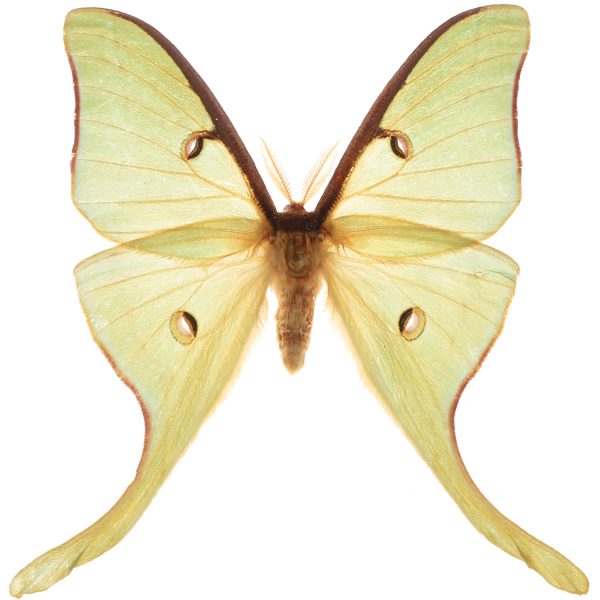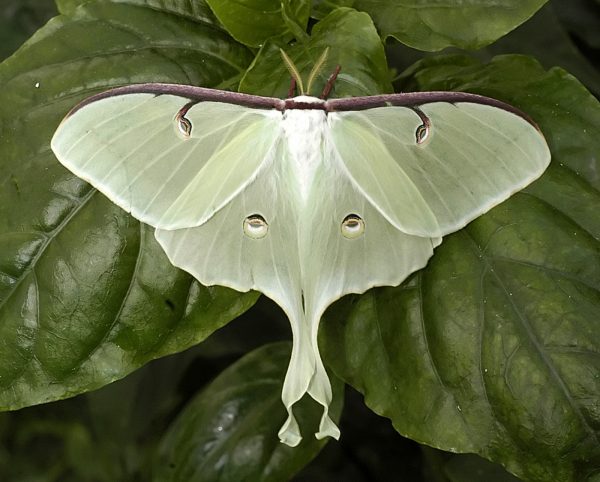In the cover of night, an unseen war between bats and moths has been raging for 60 million years—and a new study suggests the insects have evolved long tails as a defense.
The collaborative work between University of Florida and Boise State University researchers is a first step in determining why bats are lured into striking a false target and could have implications on sonar development for the military, said study co-author Akito Kawahara, assistant curator of Lepidoptera at the Florida Museum of Natural History on the UF campus.

Florida Museum photo by Geena Hill
“This finding expands our knowledge of anti-predator deflection strategies and the extent of a long-standing evolutionary arms race between bats and moths,” Kawahara said.
The study appearing today in the Proceedings of the National Academy of Sciences shows luna moths spin their long hindtails as they fly, confusing the sonar cries bats use to image prey and other objects. Diversionary tactics, such as false eye spots and bright colors, are common among prey species, but previous to this study it was unclear whether insects that fall prey to bats used visual deflection to thwart the winged mammals’ efforts.
“It’s possible other animals also use acoustic deflection strategies against echolocating predators,” said lead study author Jesse Barber, an assistant professor with the department of biology at Boise State University.
High-speed, infrared cameras and ultrasonic microphones captured the behavior and predation success of brown bats. Luna moths with tails experienced a 47 percent higher survival advantage over moths without tails, which is the same benefit moths with ears specialized for detecting the sonar signal of echolocating bats receive. Bats targeted the tail during 55 percent of the interactions, suggesting the moths may lure bats to the tails—non-essential appendages.
“It’s remarkable that hindwing tails have independently lengthened to spectacular proportions four times throughout the evolutionary history of the Saturniidae family of moths, further suggesting that the tails may be advantageous to moth species as tools for avoiding predators,” Kawahara said. “Understanding nocturnal animal interactions is essential at a time when human activities are having major impacts on the natural world.”
These findings are important because although more than half of the 140,000 species of nocturnal moths have sonar-detecting ears, more than 65,000 lack this defense, Kawahara said.

Florida Museum photo by Jeff Gage
“When you pit them against bats, bats can’t find the moths,” Kawahara said. “They go to the tail instead of the head of the moth. When you look at Lepidoptera collections, you see moths with really short tails and some with extremely long tails. This also is an example of the important role biological collections serve as repositories of patterns and processes of biodiversity.”
Kawahara said the study provides better understanding of unknown biodiversity found in places not easily accessible.
“Most people focus on the beautiful things that are around us during the day, but there’s spectacular diversity in the places we cannot easily see, like in the soil, in the deep ocean, or in the night sky —places we really don’t really often think about,” Kawahara said. “We knew that one of the biggest pressures on moths at night was bats, but we didn’t know how they got away. Now we can say with certainty that lots of different moths use many different strategies.”
Learn more about the McGuire Center for Lepidoptera & Biodiversity at the Florida Museum.